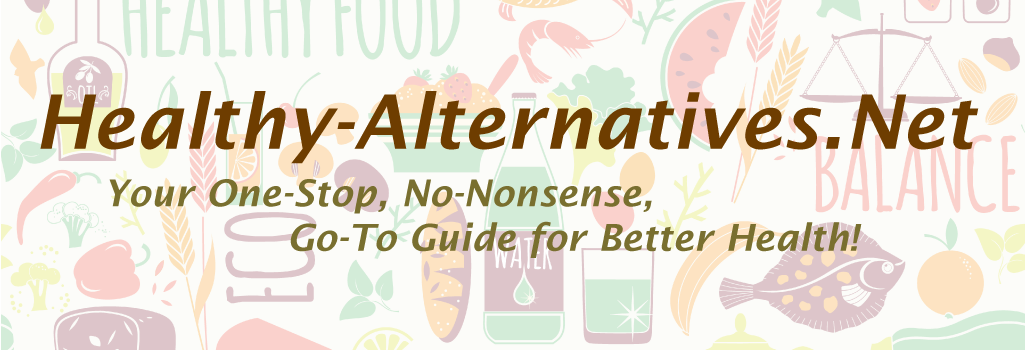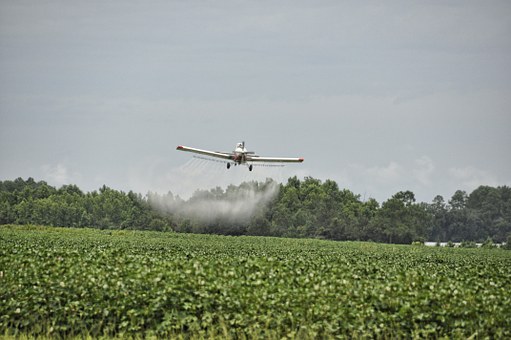Chemical Warfare
The state of Agriculture today is largely the result of a company that developed the deadly herbicide “Agent Orange” during the Vietnam War. Once their poisonous products were no longuer required, they turned their attention to the agricultural industry.
What to do with all that poison?
Monsanto, now owned by Bayer, decided to create a weed killer for the agricultural industry. Then they had to genetically modify the seeds so that they could survive the weed killer. This allowed them to obtain patents for the seeds as well. Everything that grows naturally in the wild CANNOT be patented. Companies require patents in order to sell products and make money. Here was their successful gazillion dollar plan:
- Create the cancer-causing herbicide “Roundup” to get rid of weeds = PATENT = $$$$$
- But this was killing ALL plants, not just the weeds
- Create Genetically Modified Seeds that would be resistant to Roundup = PATENT = $$$$$
- Farmers would have no choice but to use these seeds if they wanted the “benefits” of Roundup
Now they got farmers over a barrel!
Many farmers were easily “sold” on an easy weed-killing solution. BUT, this meant they also had to use Monsanto’s seeds to grow crops. And to seal the deal, farmers had to sign contracts stating they would no longuer save the seeds from their crops’ yield and instead re-purchase new seeds from Monsanto every year or face lawsuits.
Monsanto created the bogus claim that Genetically Modified Organisms were necessary to feed our growing global population. This is basically hogwash; world hunger has not subsided and the world’s population now suffers from widespread intestinal issues to a degree unheard of prior to GMOs being included in almost all processed foods since the 1990’s.
Facts & Failures
Facts
- hunger is caused by poverty and inequality: we already produce enough food to feed more than the world’s entire population and waste one-third of it
- ancient & traditional seed varieties are already suited to local conditions and environmental stress which makes them more effective and less costly than GM seeds
- the heavy use of Roundup in Canada and the US has created 28 “Superweeds” that are glyphosate-resistant (mother nature is smarter than the average bear…)
- as a result, Monsanto and Dow developed new GM crops resistant to the new pesticides which are being linked to serious health problems (on and on it goes, you can see the vicious cycle that’s happening)
- GM crops do not contribute to sustainable, healthy farming
Failures
- 20 years after GM crops were first introduced, they have not increased crop yields or farmer’s incomes and have not been better for the environment
- US yields from soy & corn have not increased
- in India, regions with low rainfall & marginal soil have seen drastic cotton crop failures magnified by the much higher cost for these GM seeds
- GM crops have caused an increase in the use of chemical herbicides by 527 million lbs in the last 16 yrs. in the US as well as pesticide use being 24% higher per acre on GM crops than conventional fields
- Argentina’s use of glyphosate (Roundup) increased from 8 million litres in 1995 to 200 million litres in 2013
- GM crops keep creating new problems for farmers and the environment
More than 60 nations make it mandatory to label products containing GMO’s. Look for “Non-GMO Project Verified” labels on packaged foods.
Products containing GMO’s:
- GMO’s are now inside 80% of the food on our shelves
- canola, corn, cottonseed & soybeans comprise 99% of the world’s GM crops
- hawaiian papaya, sugar from sugarbeets, sweet corn, yellow squash, zucchini and US alfalfa for animal feed are grown in smaller quantites – make sure you look for the Non-GMO options!
- Golden Delicious and Granny Smith apples are now victims of the GM trait: Health Canada approved the growth and sale of these apples in Canada. Okanagan Specialty Fruits, who developed this trait, was then acquired by Intrexon Coporation from the US
- the only safe sugar in North America is “Pure Cane Sugar”
- eat “whole foods” to avoid most GM ingredients found in pre-packaged foods
Top GM Crops in Canada
CORN
- in non-organic livestock feed
- in non-organic processed corn products
- cereal
- chips
- cornstarch
- corn syrup
- sweetener/oil
- sweet or table corn
- also labelled as masa, dextrose, polenta, grits, hominy, hydrolyzed vegetable protein, lecithin and xanthan gum
CANOLA
- in non-organic livestock feed
- as non-organic canola oil
- in non-organic snack foods, dressings & sauces
- in eggs, milk and meat
SUGAR BEETS
- in non-organic table sugar
- in non-organic processed sweets & snack foods
SOYBEAN
- in non-organic livestock feed
- in all non-organic soy products like soy protein, oil, tofu, soy milk & puddings, soy lecithin and hydrolyzed vegetable protein
5 more common GMO Crops
- Cotton
- Alfalfa
- Hawaiian Papaya
- Yellow Crookneck Squash
- Zucchini
Once processed, the above GMO foods end up in corn syrup, cornstarch, corn oil, beef, milk, chicken, farmed fish, soy lecithin, soy protein, vegetable oil and cottonseed oil
Buy Organic!
BENEFITS of Organic Food:
- no toxic & persistent pesticides or fertilizers
- no antibiotics
- no synthetic hormones
- no artificial ingredients
- no GMO’s
- protecting the environment & allowing a healthy ecosystem for bees, butterflies & humans
- maintaining long-term soil health
- minimizing soil erosion
- decrease pollution
- treating animals humanely
- locally grown produce can be harvested closer to peak ripeness which gives a boost to all nutrients, including polyphenols which are higher in foods grown without pesticides/fungicides in nutrient-rich organic soils
- polyhenols are anitoxidants that play a significant role in cell protection & function
PERILS of GMO & Pesticide-laden Food:
- pesticides build up in our cells over time
- several cancers, degenerative diseases, skin disorders, reproductive health complications and birth defects have been linked to pesticide exposure & chemicals used in conventional farming
- non-organic foods have increased levels of nitrates when NPK chemical fertilizers are used
- the overuse of antibiotics in livestock contributes to antibiotic resistance and bacteria proliferation in animals & people
- The cost of cheap, nutrient-poor, chemically grown food is people’s health: watch “The Human Experiment” by Sean Penn
Labels
Organic is supposed to mean the food is grown without the use of harmful pesticides and not genetically modified. But there are several different types of labels that could be misleading. Here is some clarification:
- “Canada Organic”: means the product is 95% organic content
- as per the “Biologique Canada Organic” logo from a certifying organization
- “Fair Trade”: products are made under fair working conditions including fair prices for workers & producers: cocoa, coffee, fruit, grains, sugar, teas, nuts, oils & flowers
- “Fair Trade Certification” mark is per standards by Fairtrade Canada
- #9 in front of the PLU code on produce indicates it is organic
- “Made with Organic Ingredients”: these contain less than 95% organic ingredients
- “Natural”: these don’t contain additives or preservatives but are NOT organic
- “Non-GMO Project Verified”: produced using practices for GMO avoidance
- Beware of “irridiation” which exposes food to radiation to extend shelf life as approved by Health Canada – “irridiation causes volatile toxic chemicals in food and is PROHIBITED in organic food
- irridiated foods include: onions, potatoes, wheat flour, whole wheat flour, whole or ground spices & dehydrated seasonings
Soil Microbes are the key to feeding the world!
In 2015, the Environmental Working Group declared the following US produce to be:
The cleanest (free of chemicals & pesticides):
- Avocados
- Sweet Corn
- Pineapples
- Cabbage
- Frozen Sweet Peas
- Onions
- Asparagus
- Mangoes
- Papayas
- Kiwis
- Eggplant
- Grapefruit
- Cantaloupe
- Cauliflower
- Sweet Potatoes
- Watermelon & Mushrooms are also considered low in pesticide content
Here is a list of the most contaminated produce:
… so worth shopping for the “organic” options:
- Apples: the new “Arctic” GMO apples are Granny Smith and Golden Delicious
- Celery
- Sweet Bell Peppers
- Peaches
- Strawberries
- Imported Nectarines
- Grapes
- Spinach
- Lettuce
- Cucumbers
- Domestic Blueberries
- Potatoes
- Green Beans
- Kale Greens


